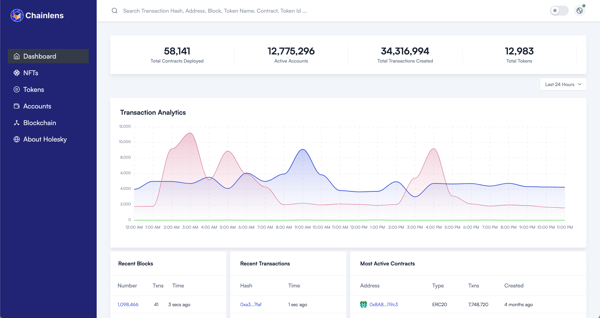Blockchain Explained
Your guide to transactions, smart contracts and more
What is blockchain?
The blockchain is a data structure composed of blocks of data which are linked to one another — hence the "chain ” in their name. The integrity of the data contained within blockchains is assured using cryptography to prove its correctness.
In its native form, blockchain data is stored in a binary format on disk by the various nodes of the network, which is incomprehensible on its own. In order to access this data you make API calls to the nodes. Such calls will return data such as the following:
Without understanding the different relationships between blocks, transactions and the data represented by transactions (covered in What are transactions?), it’s very difficult to interpret this data.
Fortunately, there are services available that aggregate this data, index and extract meaningful information from it.
The most common type of service is referred to as a block or blockchain explorer. These are services that provide a visual representation of the data contained within the blockchain in a format that allows users to browse for the data they require.
Such data includes details of transactions, accounts, tokens and cryptocurrencies that reside on that specific blockchain, which is the data users are typically most interested in.
The term “block explorer” is something of a misnomer, given that most users are interested in the assets and smart contracts that reside on different blockchains rather than the technical details of the blocks contained within.
If you want to understand the activities that are taking place on blockchain networks, your go-to tool should be the block explorer. There are analytics products available that provide complementary data sets, but if you cannot make sense of data with a block explorer, you’re unlikely to be able to understand the data provided by these other products.

Hence we will be continuing to drive into the various components of the blockchain to provide the fundamental knowledge you need in order to make sense of information “on-chain”.
We encourage you to try the Chainlens Block Explorer, a public-facing instance of it is available which you can navigate to. This is connected to the Holesky testnet, a public Ethereum test network.
Summary
Data on blockchains is stored in a binary format by nodes that make up a blockchain network. In order to understand the data that resides on these nodes, your starting point should be a block explorer which provides a visual representation of the data contained on them.
Become a web3 native by reading all of our Blockchain Explained articles.
Are you ready to adopt blockchain technology?
Our products and services make blockchain technology accessible for everyone
Chainlens Blockchain Explorer
SaaS and on-prem blockchain data and analytics platform for Ethereum compatible, layer 2 and Polkadot networks.
Enterprise blockchain support
Production support for public and private blockchain networks built using Quorum and Hyperledger Besu clients.
Web3 Labs Newsletter
With the Web3 industry moving at such a fast pace, it can be time consuming to keep track of all the latest news and events.
Subscribe to our newsletter and you'll receive regular insights and updates relating to enterprise blockchain in one place.
